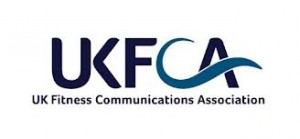If you are training for a big challenge cycle ride for the first time and have only a short period of time in which to prepare, it’s important to get the basics right as the injury risk could be high.

Injuries to the knee and hip are particularly common (such as patellofemoral pain (pain behind and around the kneecap), ITB syndrome (pain over the outside of the thigh and knee), trochanteric Bursitis (pain over the outer aspect of the hip) when undergoing heavy increases in cycling training. By having a few measures in place will help minimise this from occurring and impacting negatively on your preparation and performance on the day.
First and foremost, if you start to experience pain in any area (DOMS and fatigue aside!) it is important to see your healthcare professional, for advice on how serious it is and the most appropriate way to manage it. If you have suffered any major injury in the past it would also be highly advisable to have it looked at by a professional, prior to beginning large increases in volumes of training.
Core strength is another hugely important aspect of cycling. By stabilising your trunk, having a strong core creates a smoother pedal stroke, which not only improves performance by optimising the power output of the thigh muscles, but also helps prevent knee injuries caused by abnormal biomechanical alignment. Having a strong core also reduces the amount of force going into the knees, therefore increasing tolerance to increases in training load. Exercises such as planks, side planks and bridges are very effective at building strength in the core muscles. These should only be carried out for a short period of time to begin with (10 seconds) if they are exercises you are new to, before increasing the length of time you hold them for.
 Strengthening exercises to supplement your cycling may be beneficial, but should be carried out with caution as your muscles will be adapting to new levels of training and will need sufficient recovery time. If you have any muscle imbalances, these could affect the biomechanics of your cycling motion and could potentially cause injury so by having a pre-training plan screening (carried out by your physiotherapist / sports therapist) you would be able to help you identify which muscle groups (if any) need targeting and give you appropriate exercises to increase strength in the required areas.
Strengthening exercises to supplement your cycling may be beneficial, but should be carried out with caution as your muscles will be adapting to new levels of training and will need sufficient recovery time. If you have any muscle imbalances, these could affect the biomechanics of your cycling motion and could potentially cause injury so by having a pre-training plan screening (carried out by your physiotherapist / sports therapist) you would be able to help you identify which muscle groups (if any) need targeting and give you appropriate exercises to increase strength in the required areas.
A good flexibility programme is also essential to withstand increased training loads, as the muscles will be less pre-disposed to injury if they are lengthened, and stretching in between long and high intensity rides will help to speed up recovery.
The most important muscle groups to stretch are the muscles around the hips (Glutes and Piriformis), thigh (Quadriceps, Hamstrings and ITB) and calves (Gastrocnemius and Soleus). The back and arms should not be forgotten and stretched appropriately!
Stretches should be held for 20-30 seconds and carried out in repetitions of 2 or 3 per muscle group. Don’t be afraid to spend 15-20 minutes stretching after a high intensity training session as it will help speed up your recovery and prevent injury (as well as help being able to walk the next day!) Sports massage complements a good stretching programme by speeding up recovery from muscle stiffness and lactic acid build up, as well as helping to increase length of the muscles when stretching.
In essence, prevention is far better than cure so sit down with your coach, therapist and a blank piece of paper and work out the best plan of action for you given the time and expertise available to you. Look at all the aspects discussed above and build a realistic programme of training and exercise that will help you get to the start line and make the most of the experience!
Core strength is another hugely important aspect of cycling. By stabilising your trunk, having a strong core creates a smoother pedal stroke, which not only improves performance by optimising the power output of the thigh muscles, but also helps prevent knee injuries caused by abnormal biomechanical alignment. Having a strong core also reduces the amount of force going into the knees, therefore increasing tolerance to increases in training load. Exercises such as planks, side planks and bridges are very effective at building strength in the core muscles. These should only be carried out for a short period of time to begin with (10 seconds) if they are exercises you are new to, before increasing the length of time you hold them for.
 Strengthening exercises to supplement your cycling may be beneficial, but should be carried out with caution as your muscles will be adapting to new levels of training and will need sufficient recovery time. If you have any muscle imbalances, these could affect the biomechanics of your cycling motion and could potentially cause injury so by having a pre-training plan screening (carried out by your physiotherapist / sports therapist) you would be able to help you identify which muscle groups (if any) need targeting and give you appropriate exercises to increase strength in the required areas.
Strengthening exercises to supplement your cycling may be beneficial, but should be carried out with caution as your muscles will be adapting to new levels of training and will need sufficient recovery time. If you have any muscle imbalances, these could affect the biomechanics of your cycling motion and could potentially cause injury so by having a pre-training plan screening (carried out by your physiotherapist / sports therapist) you would be able to help you identify which muscle groups (if any) need targeting and give you appropriate exercises to increase strength in the required areas.
A good flexibility programme is also essential to withstand increased training loads, as the muscles will be less pre-disposed to injury if they are lengthened, and stretching in between long and high intensity rides will help to speed up recovery.
The most important muscle groups to stretch are the muscles around the hips (Glutes and Piriformis), thigh (Quadriceps, Hamstrings and ITB) and calves (Gastrocnemius and Soleus). The back and arms should not be forgotten and stretched appropriately!
Stretches should be held for 20-30 seconds and carried out in repetitions of 2 or 3 per muscle group. Don’t be afraid to spend 15-20 minutes stretching after a high intensity training session as it will help speed up your recovery and prevent injury (as well as help being able to walk the next day!) Sports massage complements a good stretching programme by speeding up recovery from muscle stiffness and lactic acid build up, as well as helping to increase length of the muscles when stretching.
In essence, prevention is far better than cure so sit down with your coach, therapist and a blank piece of paper and work out the best plan of action for you given the time and expertise available to you. Look at all the aspects discussed above and build a realistic programme of training and exercise that will help you get to the start line and make the most of the experience!
 Strengthening exercises to supplement your cycling may be beneficial, but should be carried out with caution as your muscles will be adapting to new levels of training and will need sufficient recovery time. If you have any muscle imbalances, these could affect the biomechanics of your cycling motion and could potentially cause injury so by having a pre-training plan screening (carried out by your physiotherapist / sports therapist) you would be able to help you identify which muscle groups (if any) need targeting and give you appropriate exercises to increase strength in the required areas.
Strengthening exercises to supplement your cycling may be beneficial, but should be carried out with caution as your muscles will be adapting to new levels of training and will need sufficient recovery time. If you have any muscle imbalances, these could affect the biomechanics of your cycling motion and could potentially cause injury so by having a pre-training plan screening (carried out by your physiotherapist / sports therapist) you would be able to help you identify which muscle groups (if any) need targeting and give you appropriate exercises to increase strength in the required areas.


